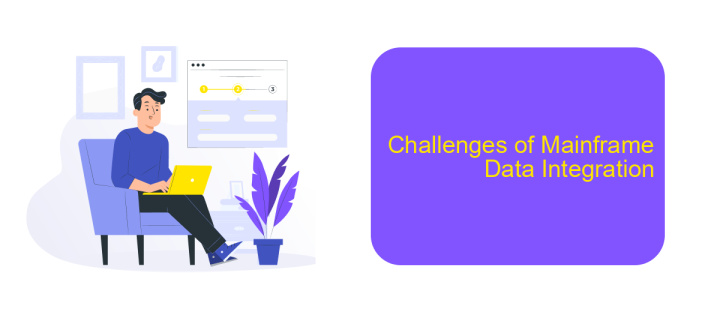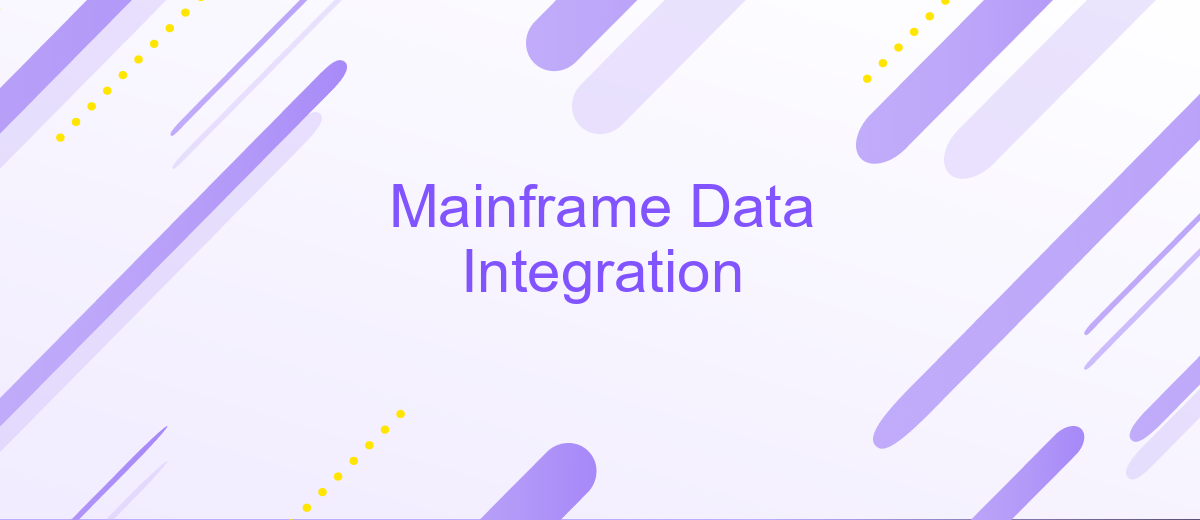Mainframe Data Integration
Mainframe data integration is a critical process for modern enterprises looking to leverage their legacy systems alongside contemporary technologies. By seamlessly merging data from mainframes with cloud and other platforms, businesses can unlock valuable insights, enhance operational efficiency, and drive innovation. This article explores the strategies, tools, and best practices for achieving effective mainframe data integration in today's dynamic IT landscape.
Introduction
Mainframe data integration is a critical aspect of modern IT infrastructure, enabling organizations to bridge the gap between legacy systems and contemporary applications. As businesses increasingly rely on data-driven decision-making, integrating mainframe data with other systems becomes essential for ensuring seamless operations and comprehensive analytics.
- Enhanced operational efficiency through real-time data access
- Improved decision-making with comprehensive data insights
- Cost savings by leveraging existing mainframe investments
Various tools and services facilitate mainframe data integration, including ApiX-Drive, which offers a user-friendly platform for automating data flows between disparate systems. By utilizing such solutions, organizations can streamline their integration processes, minimize manual intervention, and ensure data consistency across different platforms. Ultimately, effective mainframe data integration empowers businesses to harness the full potential of their data assets.
Mainframe Data Integration: Overview

Mainframe data integration involves the seamless connection and synchronization of data between mainframe systems and modern IT infrastructures. This process is essential for organizations that rely on legacy systems but need to leverage contemporary data analytics, cloud services, and other advanced technologies. By integrating mainframe data, businesses can ensure real-time data availability, improve operational efficiency, and enhance decision-making processes.
One of the critical aspects of mainframe data integration is the use of specialized tools and services that facilitate the integration process. For instance, ApiX-Drive offers a versatile platform that allows seamless integration of mainframe data with various applications and services. By using ApiX-Drive, organizations can automate data workflows, reduce manual intervention, and ensure data consistency across different systems. This not only saves time and resources but also minimizes the risk of errors, making it a valuable solution for businesses looking to modernize their IT ecosystems.
Benefits of Mainframe Data Integration

Mainframe data integration offers numerous advantages for businesses looking to streamline their operations and enhance data accessibility. By integrating mainframe data with modern platforms, organizations can achieve real-time data access and improved decision-making capabilities.
- Enhanced Efficiency: Integrating mainframe data reduces the need for manual data entry, thereby minimizing errors and saving time.
- Cost Savings: Streamlined data processes lead to lower operational costs by reducing the need for multiple data storage systems.
- Improved Data Quality: Data integration ensures that information is consistent and up-to-date across all systems.
- Scalability: As businesses grow, integrated systems can easily scale to accommodate increasing data volumes.
- Seamless Integration: Services like ApiX-Drive facilitate easy and efficient integration between mainframe data and various modern applications.
Utilizing mainframe data integration allows businesses to remain competitive by leveraging their existing data assets more effectively. Tools like ApiX-Drive make the integration process straightforward, enabling organizations to focus on their core activities while ensuring data remains accurate and accessible. This holistic approach to data management fosters a more agile and responsive business environment.
Challenges of Mainframe Data Integration

Mainframe data integration presents numerous challenges that organizations must navigate to ensure seamless data flow and operational efficiency. One of the primary issues is the inherent complexity of mainframe systems, which often operate on legacy code and outdated protocols. This makes it difficult to integrate with modern applications and platforms.
Another significant challenge is data security. Mainframes often handle sensitive and critical information, requiring robust security measures during data transfer and integration processes. Ensuring data integrity and compliance with regulatory standards adds another layer of complexity.
- Compatibility issues with modern software.
- High costs associated with mainframe maintenance and integration.
- Limited availability of skilled personnel familiar with mainframe technology.
- Ensuring real-time data synchronization across systems.
To address these challenges, organizations can leverage integration platforms like ApiX-Drive, which simplify the process by providing pre-built connectors and automated workflows. This not only reduces the time and effort required for integration but also ensures that data is securely and efficiently transferred between mainframe systems and modern applications.


Solutions for Mainframe Data Integration
Mainframe data integration is essential for modern enterprises to ensure seamless data flow between legacy systems and contemporary applications. One effective solution is using middleware platforms that facilitate communication between mainframes and other systems. These platforms often support various data formats and protocols, enabling real-time data exchange and synchronization. Additionally, they provide tools for data transformation and mapping, ensuring that data is accurately translated and integrated between disparate systems.
Another approach is leveraging cloud-based integration services such as ApiX-Drive, which offers a user-friendly interface for setting up automated workflows. ApiX-Drive allows businesses to connect their mainframe data with cloud applications, databases, and other enterprise systems without extensive coding. This service supports numerous pre-built connectors and provides customizable integration templates, making it easier to manage and monitor data flows. By utilizing these solutions, organizations can enhance their operational efficiency, reduce manual data handling, and ensure data consistency across all platforms.
FAQ
What is Mainframe Data Integration?
Why is Mainframe Data Integration important?
What are the common challenges in Mainframe Data Integration?
How can automation tools help in Mainframe Data Integration?
What are the best practices for successful Mainframe Data Integration?
Time is the most valuable resource in today's business realities. By eliminating the routine from work processes, you will get more opportunities to implement the most daring plans and ideas. Choose – you can continue to waste time, money and nerves on inefficient solutions, or you can use ApiX-Drive, automating work processes and achieving results with minimal investment of money, effort and human resources.

